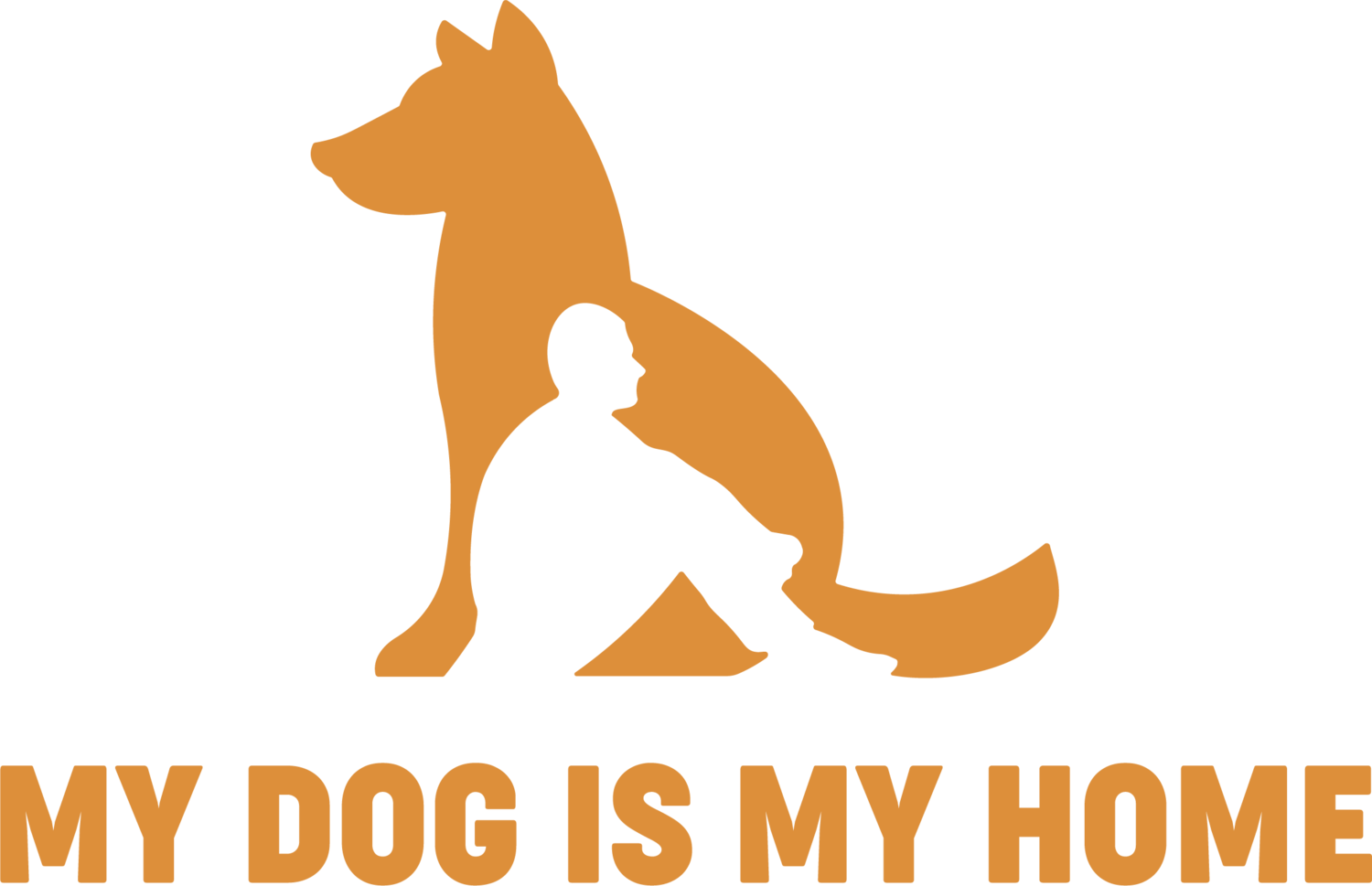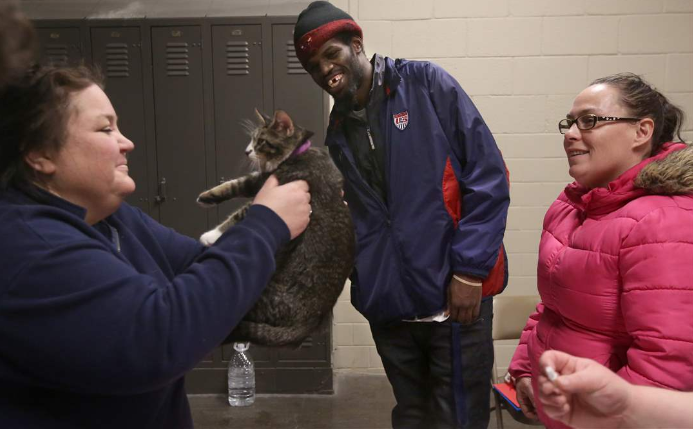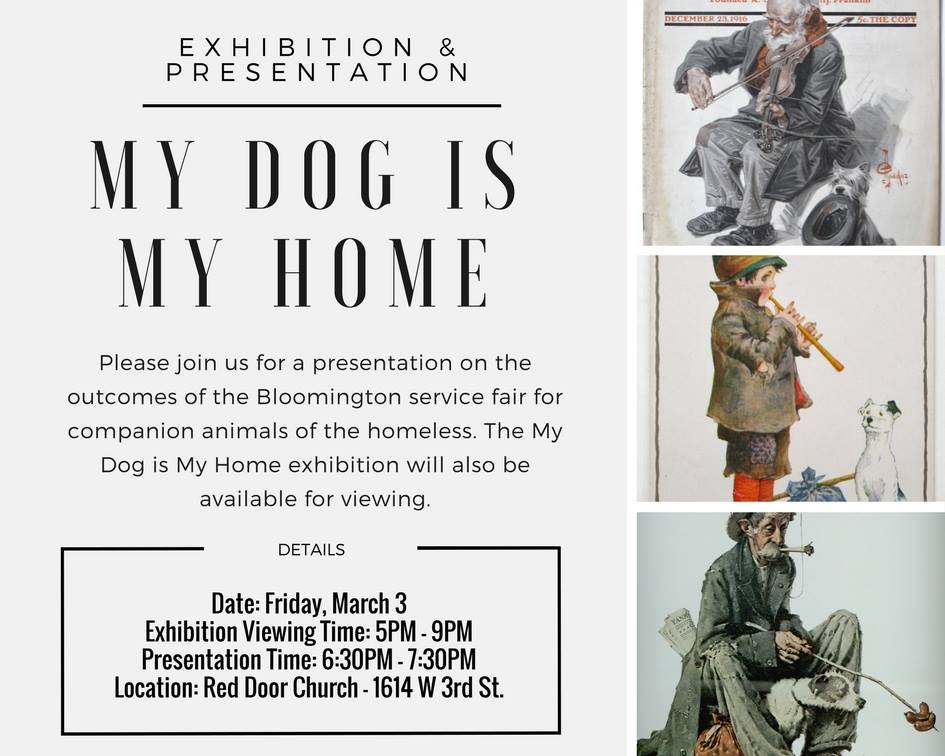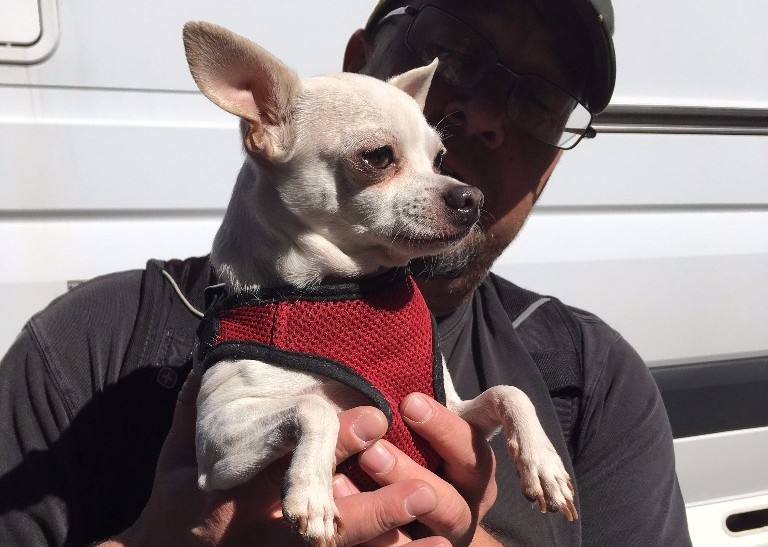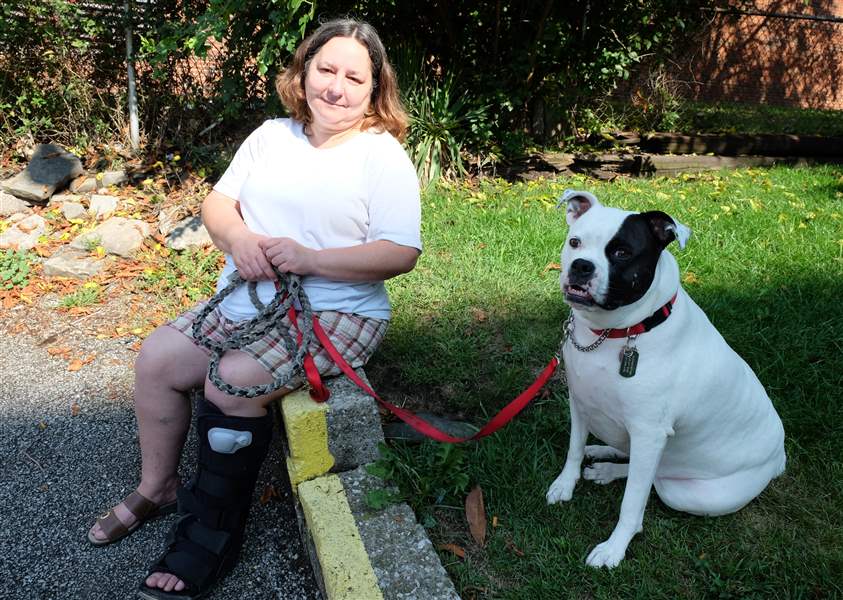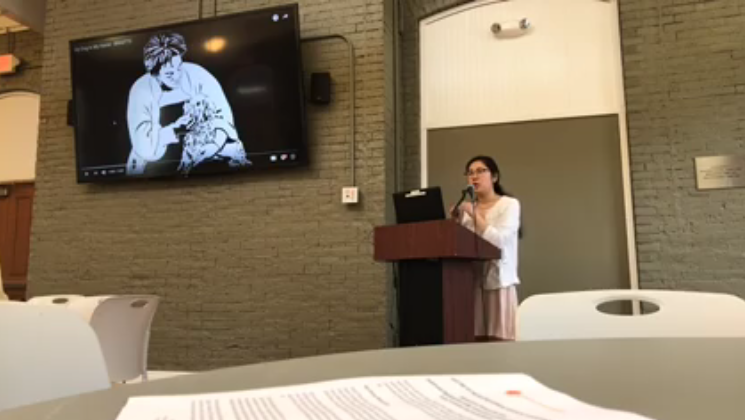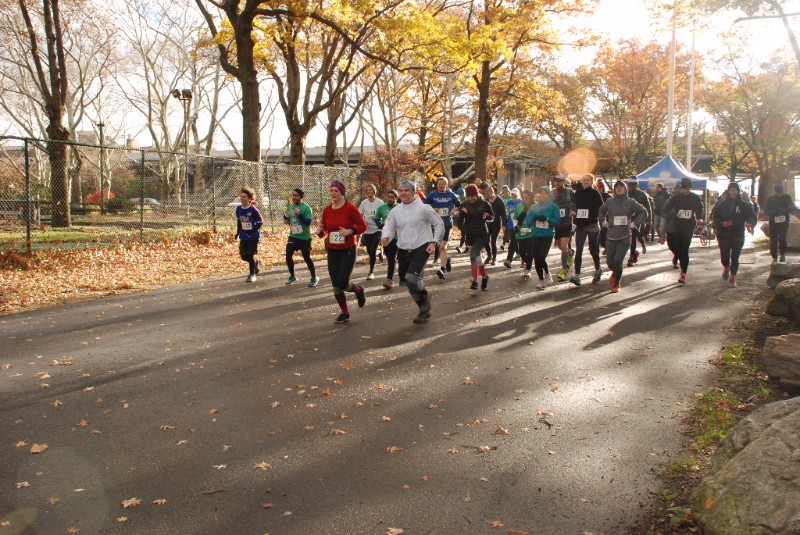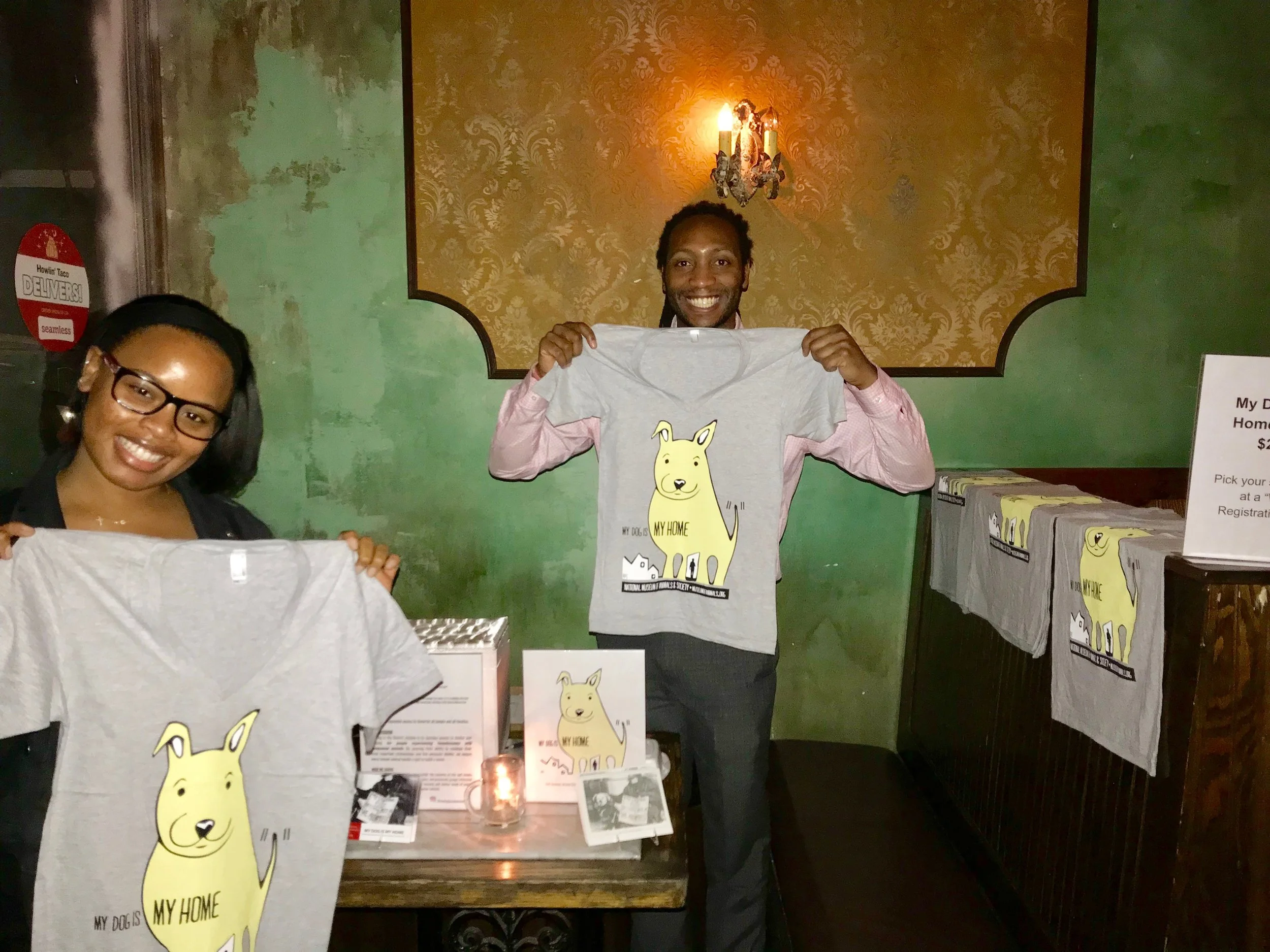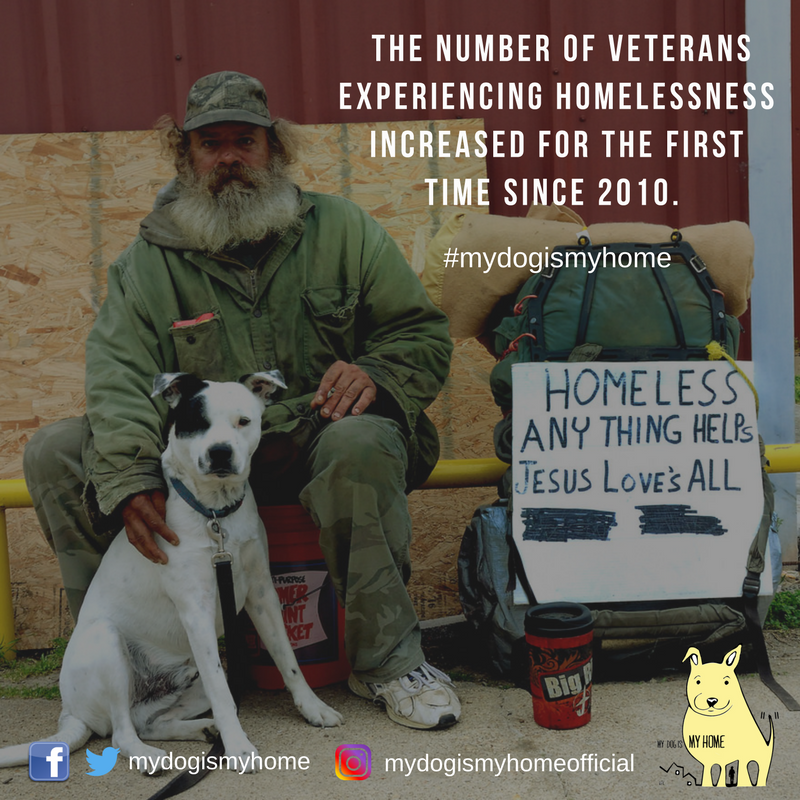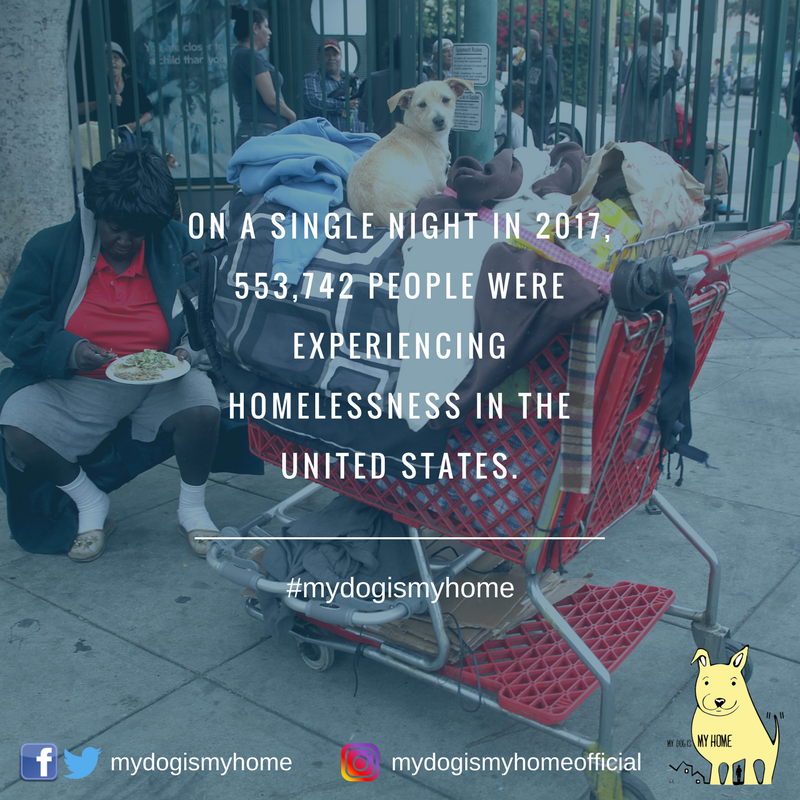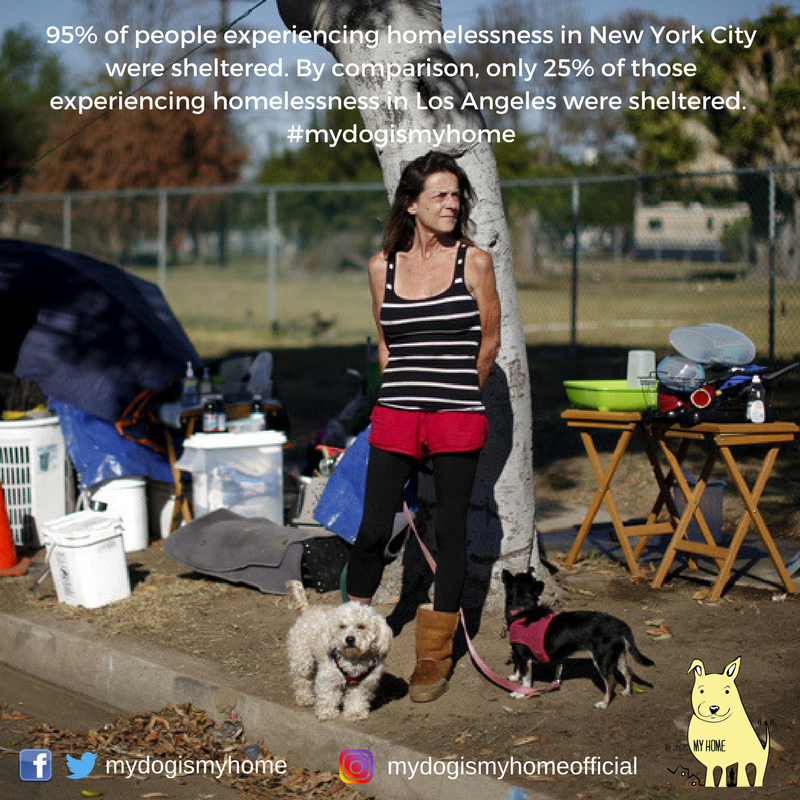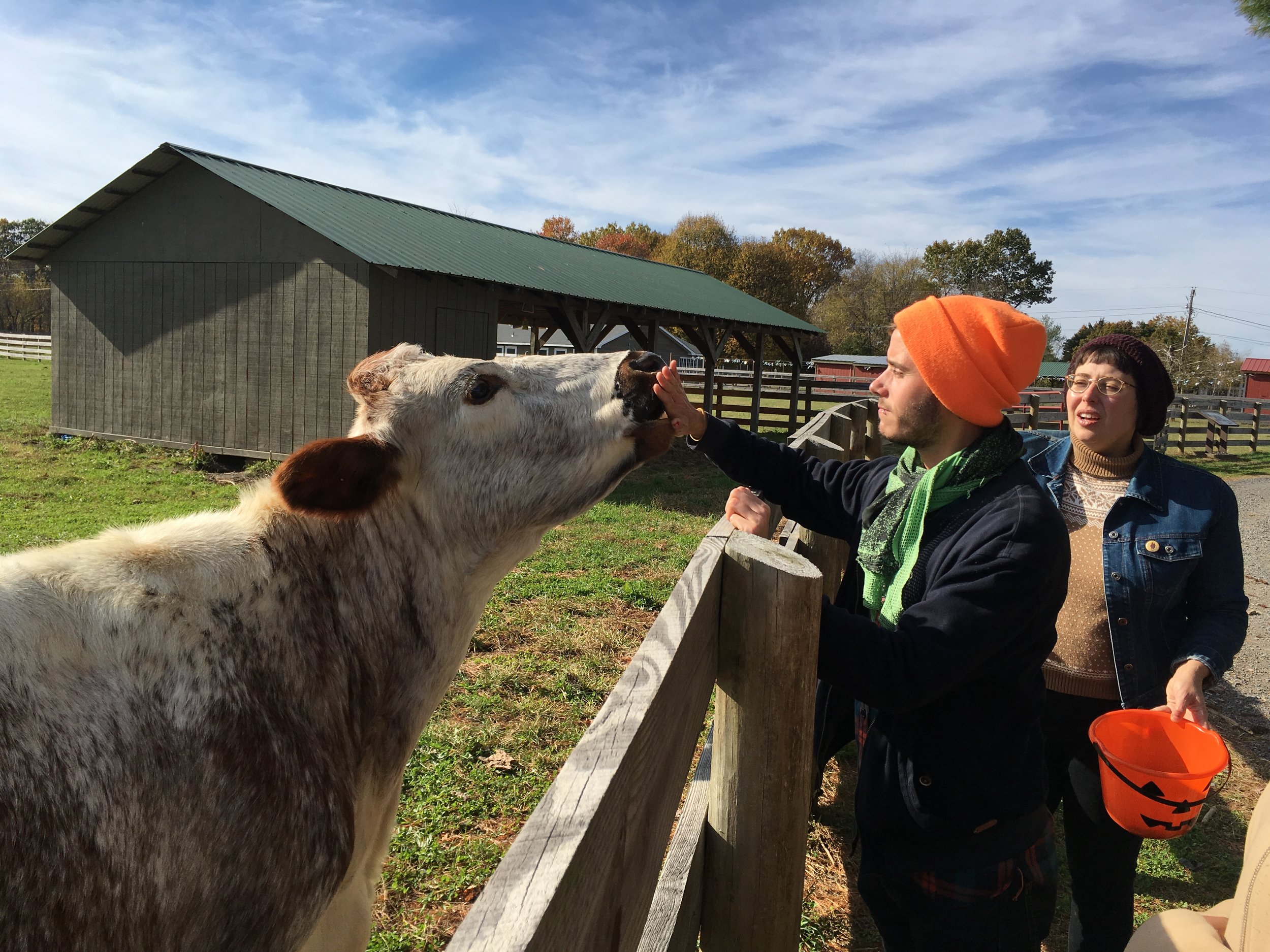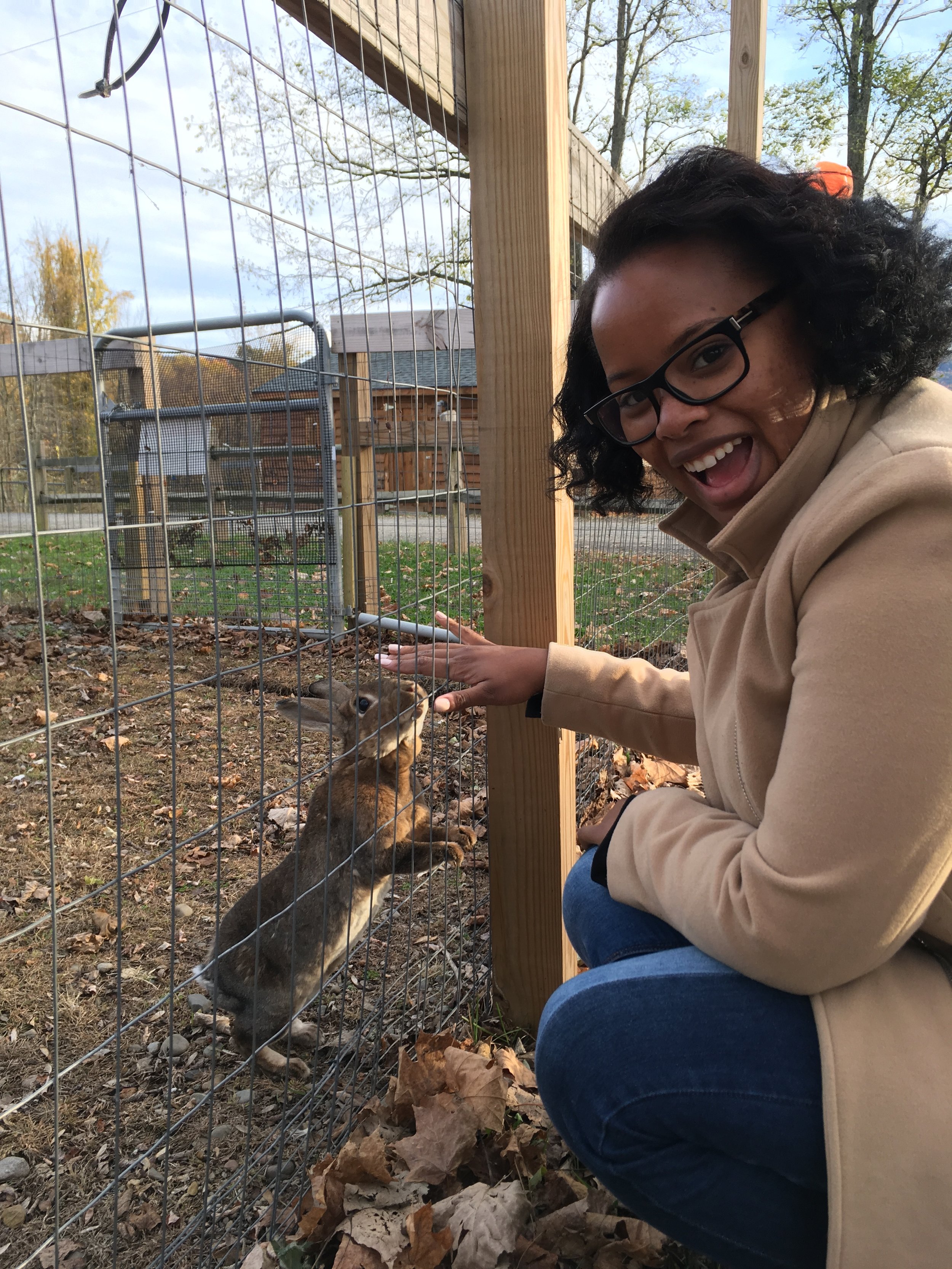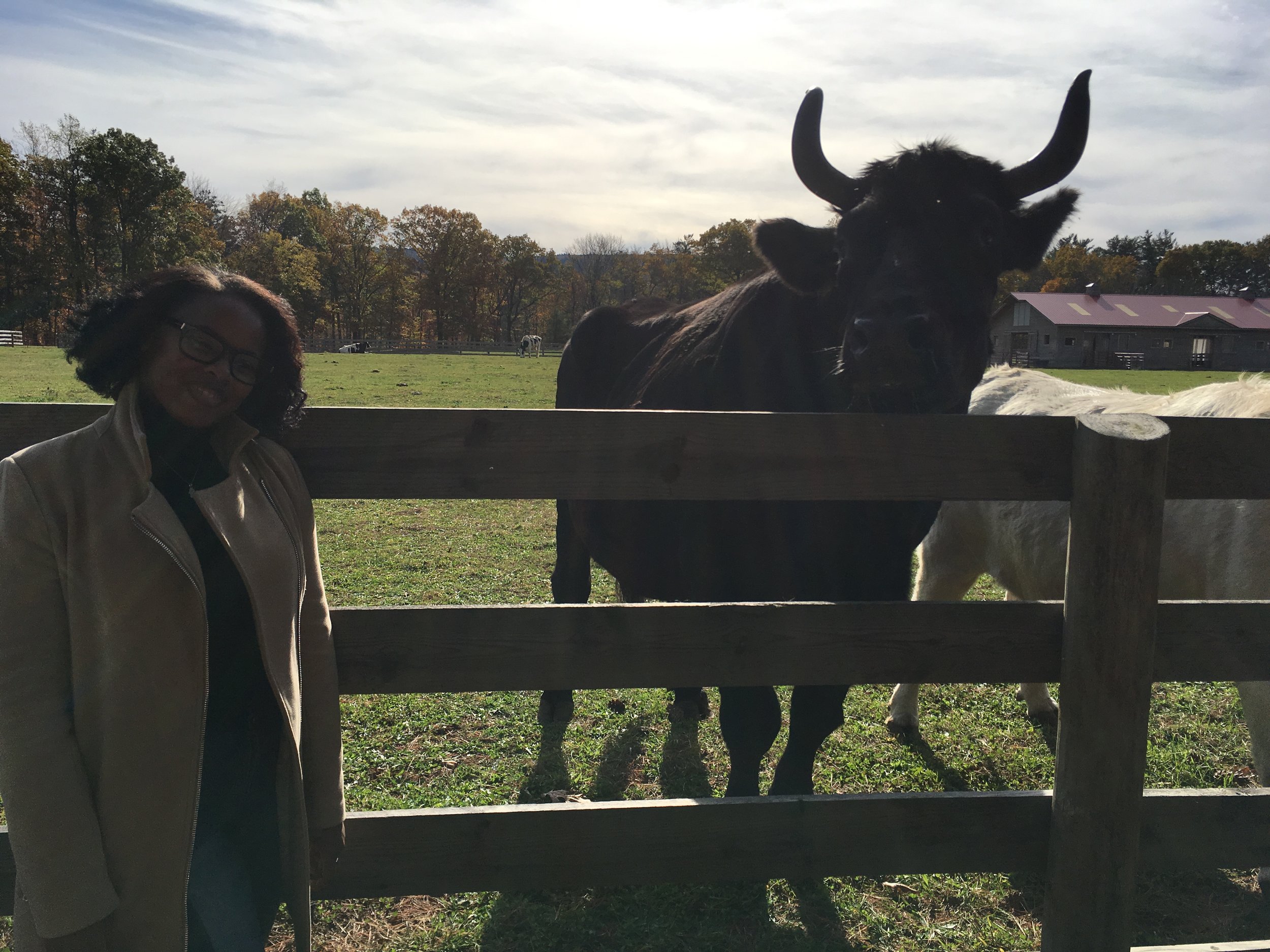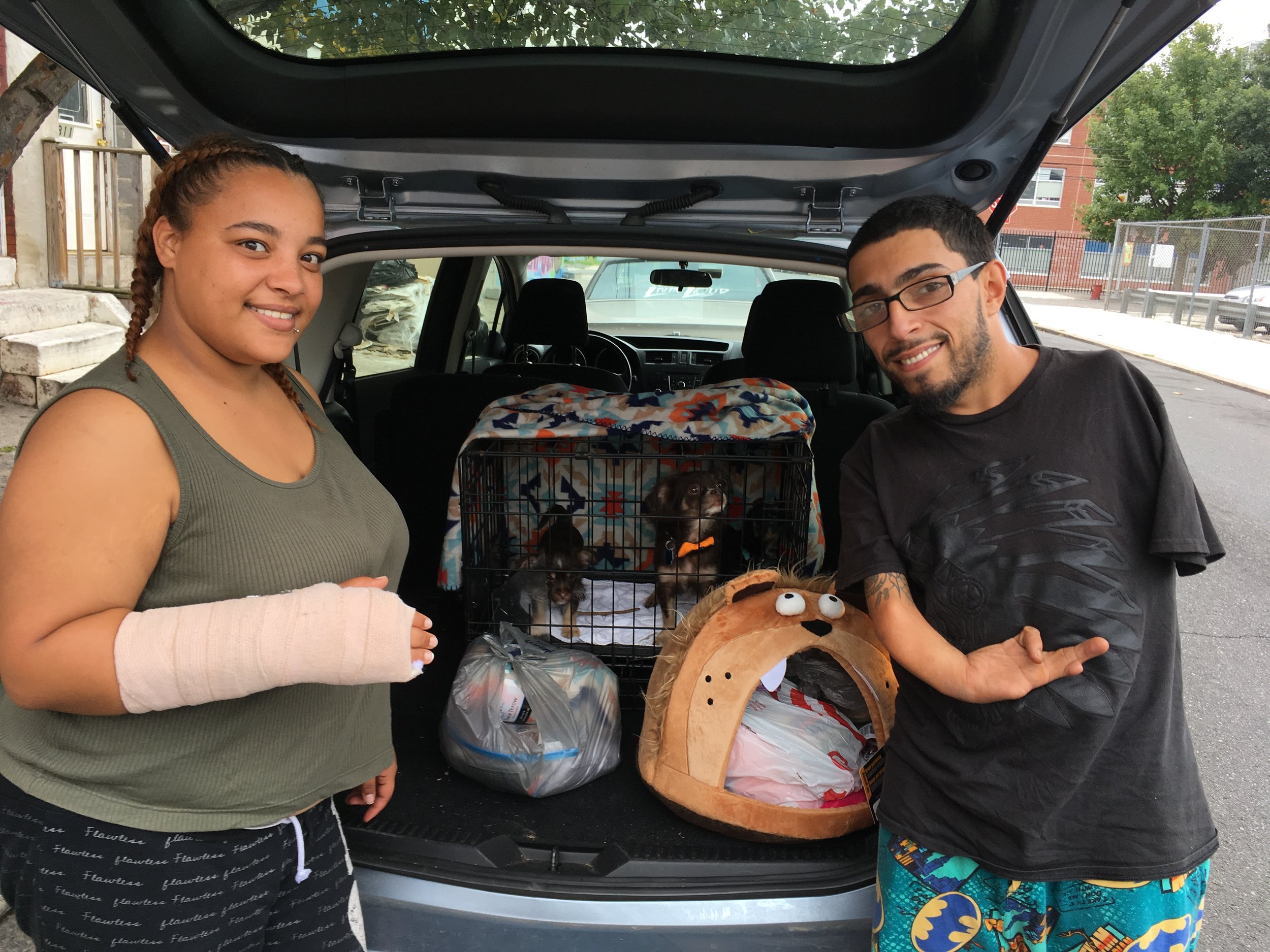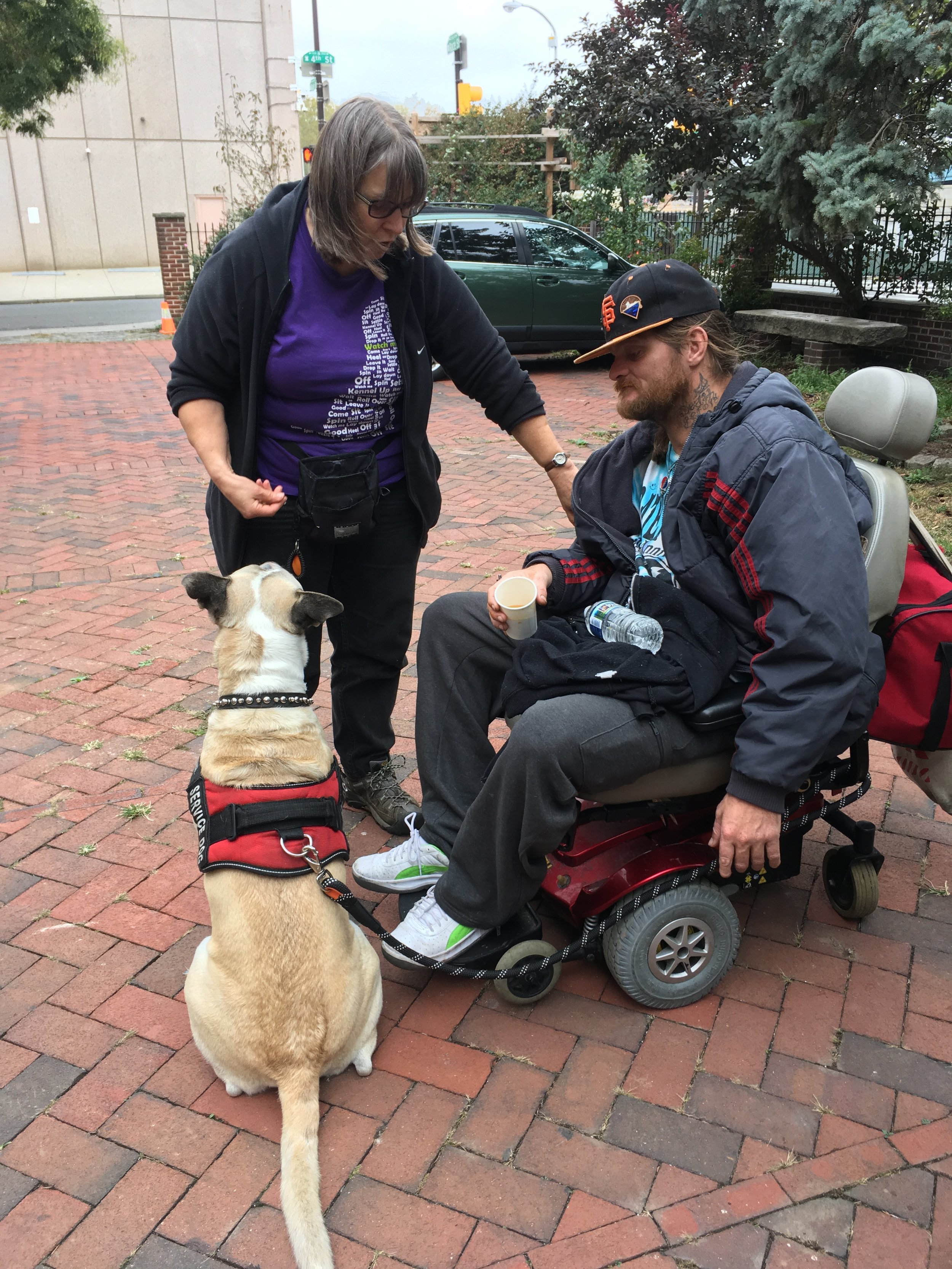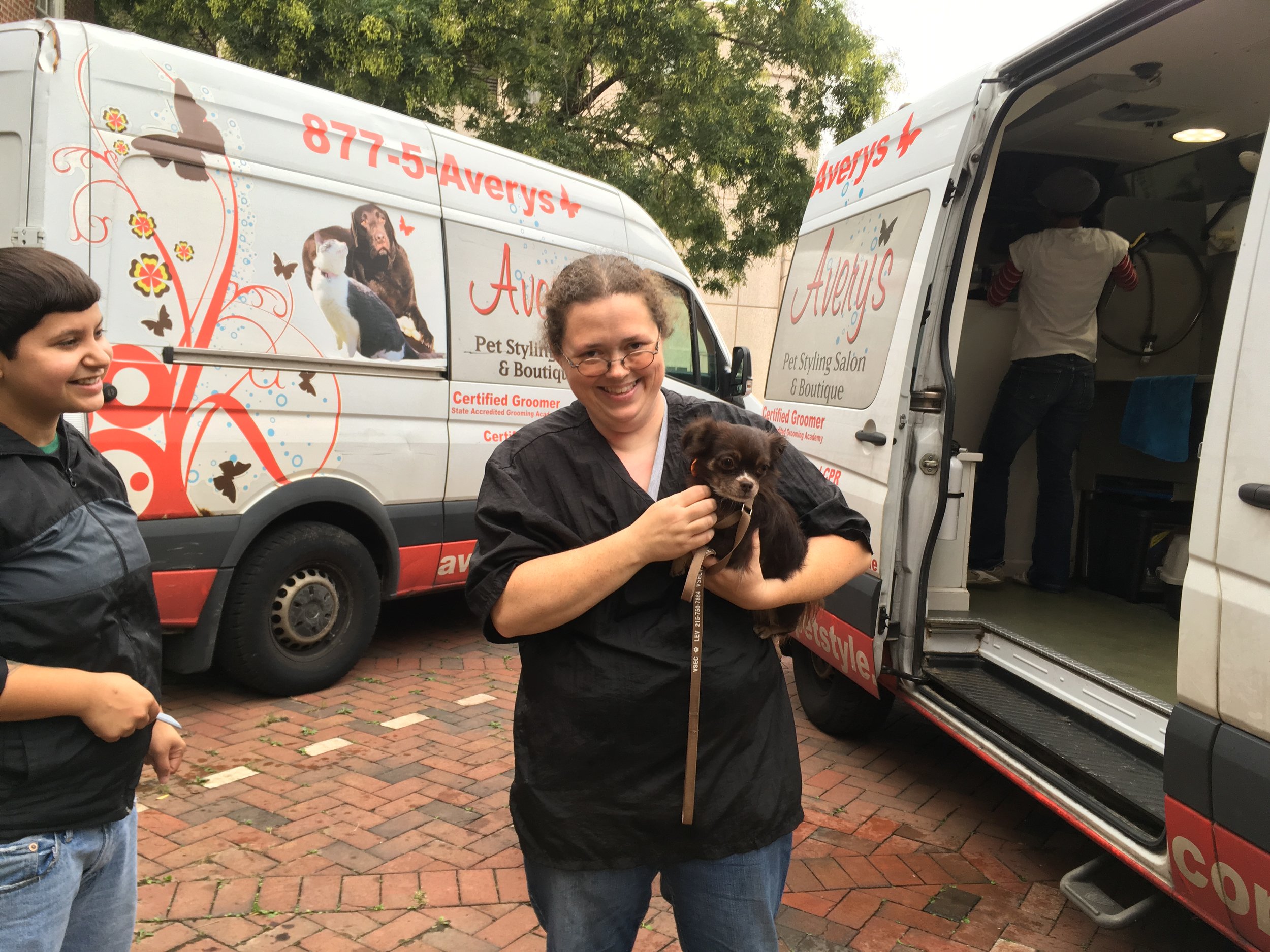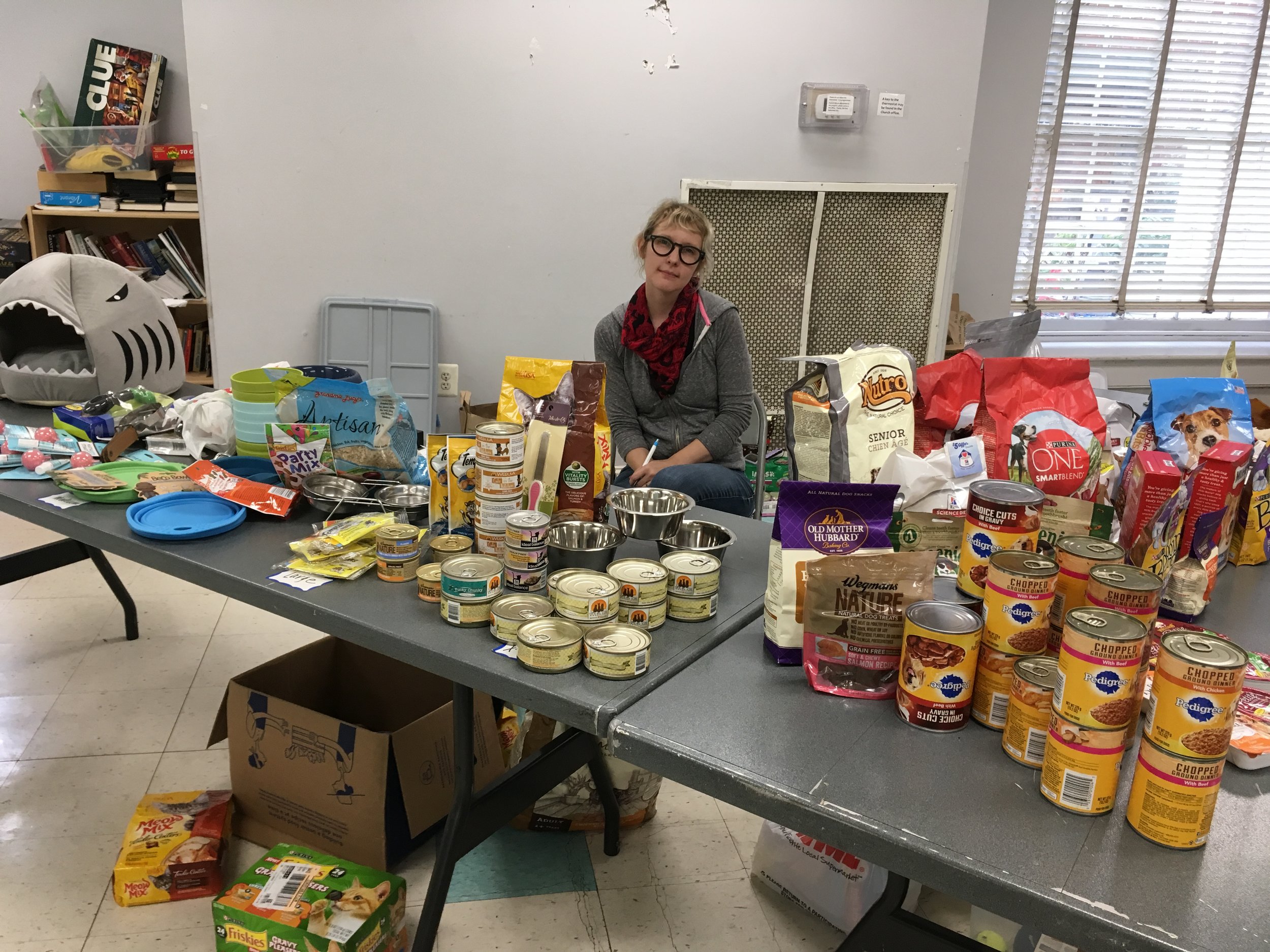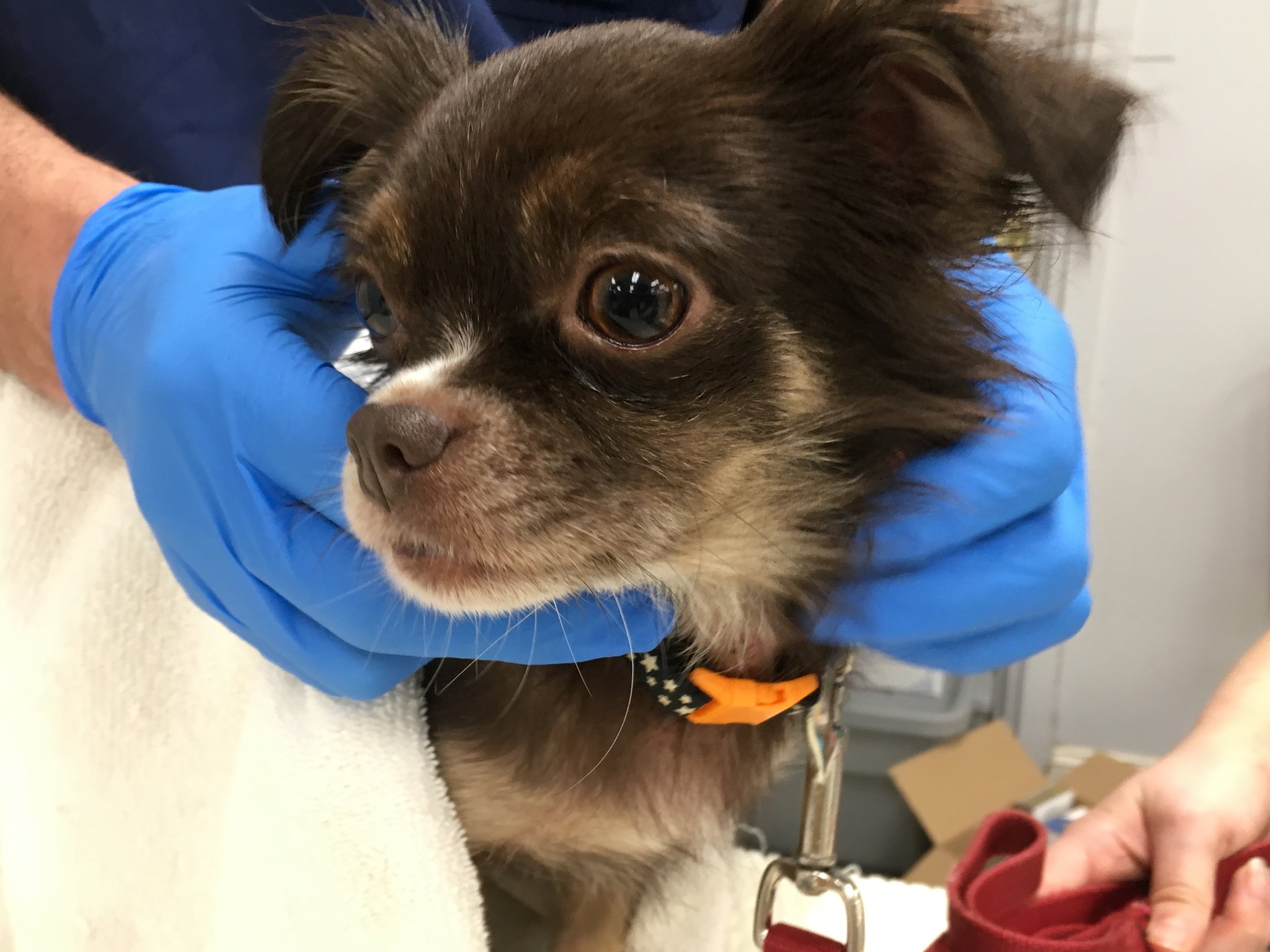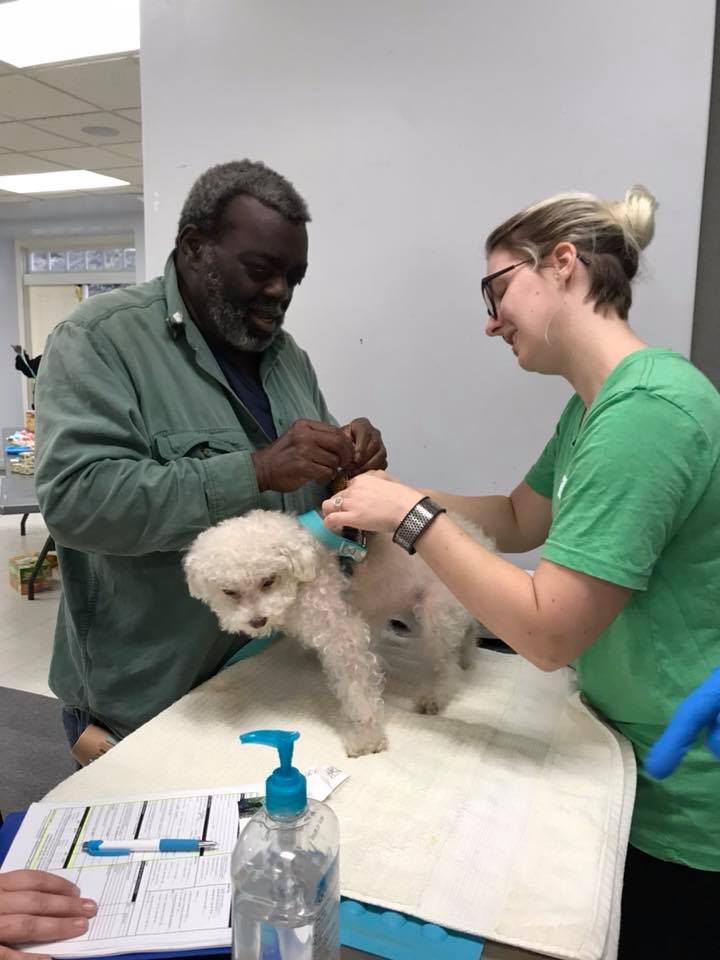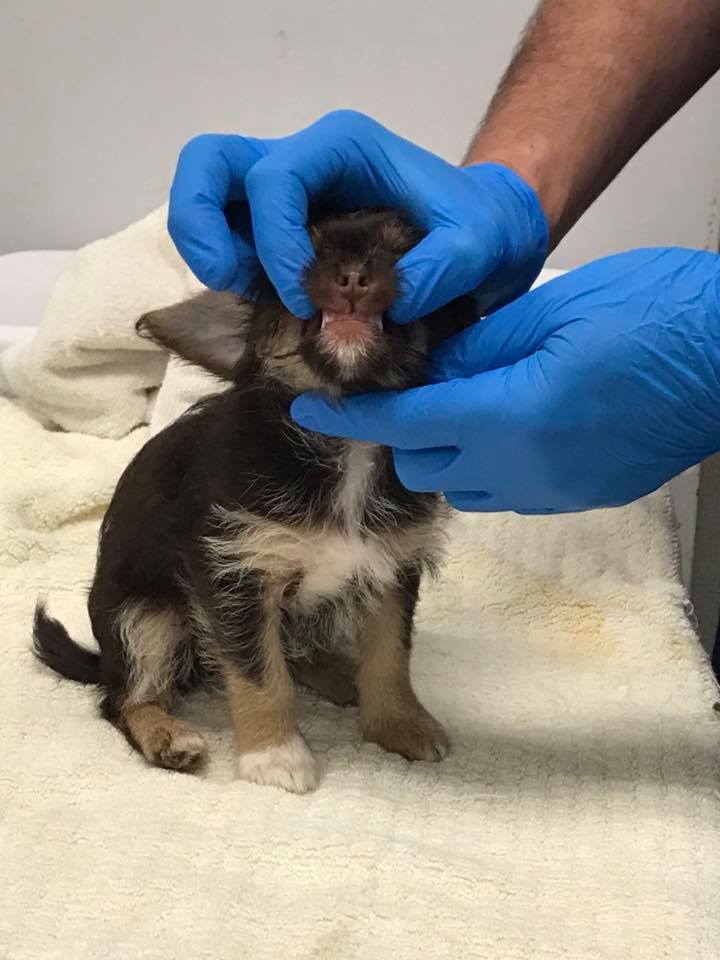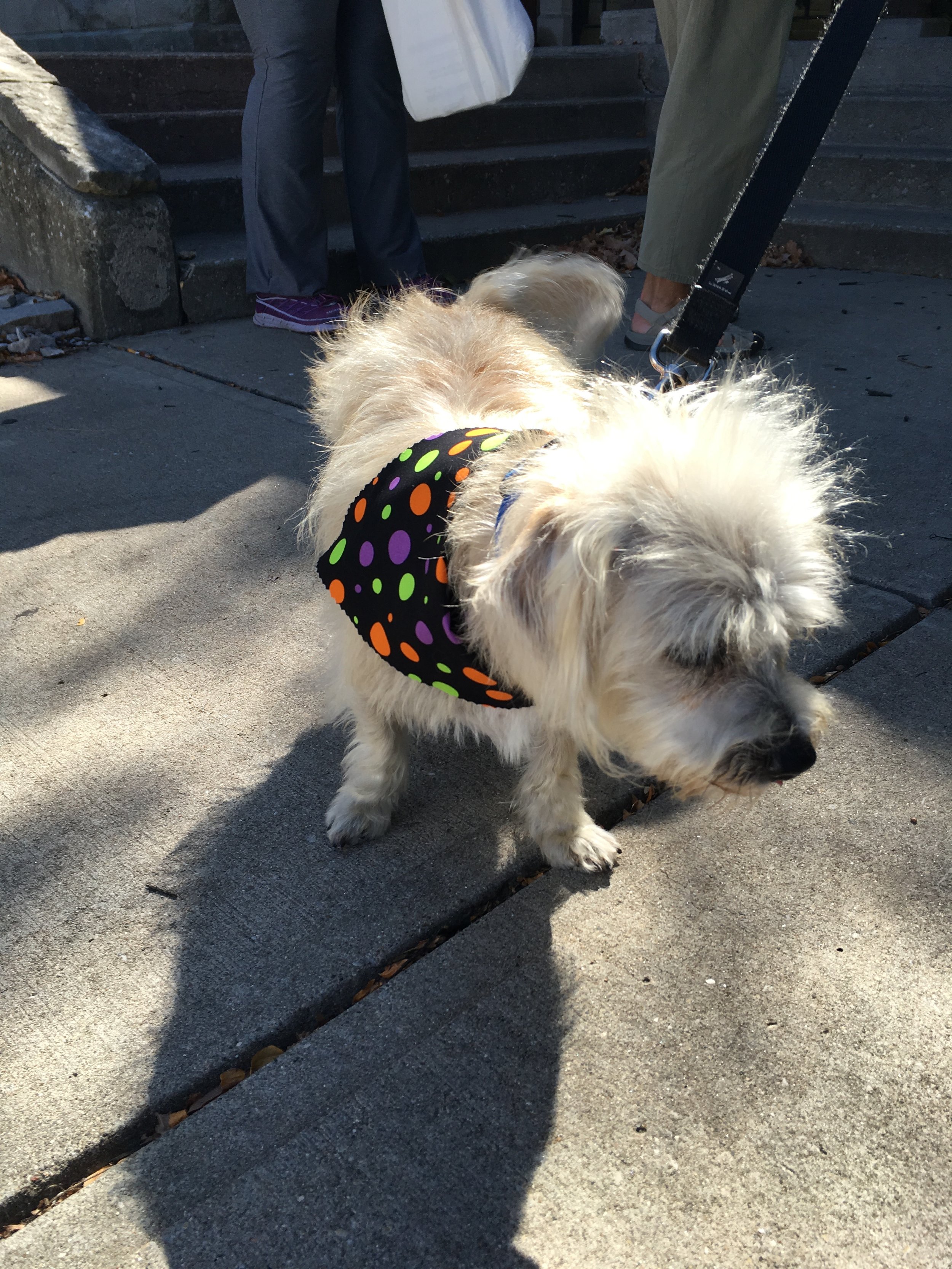My Dog is My Home met with directors of the Office of Homeless Services (OHS) and Department of Behavioral Health and Intellectual disAbility Services (DBHIDS) in Philadelphia in February. The meeting came at fortuitous time, in conjunction with the departments' growing awareness for the need to co-shelter people and their animals together. In order to build programs, policies, and protocols that properly address the population's needs, all parties discussed the importance of data and methods for collection.
Join Our Team! Now Recruiting Volunteer Staff - Social Media Manager & Human Resources / Volunteer Manager
Co-Sheltering Collaborative: Inspiring Change in Homeless Services
By Dana Teel, MDIMH intern
For communities wishing to provide equitable access to homes to all people and families in need, it is necessary to expand temporary shelter accommodations for the furry, feathered, and scaled friends that may accompany people experiencing homelessness. But how is this accomplished with maximum impact and minimal risk? Surely adding animals to a human shelter environment will be chaotic and even risky. Perhaps. But the reward of keeping people with their animals when they are needed the most is worth facing the challenge. For some, a companion animal might be their sole source of support, comfort, or purpose, and the value of this should not be overlooked.
Sacramento's pet-friendly winter shelter is a success, with some complications to learn from
Sacramento's first low-barrier winter shelter (one that accepts the "3 P's" - partners, pets, and possessions) is proving to be quite successful at getting people out of the streets and encampments in the winter. However, that does not mean they did not experience their fair share of challenges.
“It’s not perfect, but it’s working,” Jaycob Bytel, spokesperson for Mayor Darrell Steinberg, said of the city’s approach to sheltering homeless people this winter. “Allowing pets to stay with their owners has been a critical part of getting chronically homeless people to come in, which is exactly what we had hoped to do.”
NYC HOPE and Shadow Count 2018
Volunteer for Your Community PIT Count
Meeting with NYC Mayor Bill de Blasio at the Queens District 30 Town Hall
Social Work / Community Organizing intern Tiffany Noboa meets with the mayor to discuss the lack of co-sheltering options for people experieincing homelessness with animals in NYC.
My Dog is My Home brought the issue of co-sheltering to the attention of politicians and bureaucrats at the December town hall meeting for Queens District 30. What became abundantly clear to us was that co-sheltering was not a topic often (or perhaps ever!) thought of by our elected officials within the realm of homeless services. Help us bring it up often by joining us at future town hall meetings. Email community organizing intern Tiffany Noboato get involved.
A Year in Review
2017 was a tremendous year for My Dog is My Home. Scroll through our gallery to revisit just a few of our favorite moments from last year.
From top to bottom, left to right: Toledo Service Fair (photo credit: Toledo Blade), Bloomington exhibition and presentation on service fair data, Asheville pop-up exhibition and presentation at Firestorm Books & Coffee, Bloomington Service Fair #2, Toledo Social Work continuing education event with special guest Diann Wears (photo credit: Toledo Blade), Video: Advocacy Research Symposium at College of Mount Saint Vincent, Philadelphia Service Fair and Blessing of the Animals, annual meeting at Woodstock Farm Sanctuary, starting line at the 1st Annual Tofurky Trot to benefit My Dog is My Home, LAHSA/My Dog is My Home webinar for new co-shelter providers in Los Angeles, founder Christine Kim speaks with mayor Bill de Blasio about co-sheltering options in NYC at a town hall meeting.
Thanks for Joining Us at Vegan Drinks BK!
Thank you to U.S. Veg Corp and NYC Vegetarian Food Festival for inviting us to last night's #VeganDrinksBK as a nonprofit partner. We also thank everyone who stopped by our table to chat! We had a great time connecting with fellow animal lovers at Reclamation to talk about the power of the human-animal bond in circumstances of homelessness. Stay in touch! Sign up for our newsletter!
Join us at Vegan Drinks Brooklyn featuring Chef Rootsie
My Dog is My Home is thrilled to be the nonprofit partner for this month's Vegan Drinks Brooklyn at Reclamation Bar. Enjoy a cocktail and come meet us in person!
Facebook event page
Food vendor for the night: Veggie Grub
Date & Time: Thursday, January 11 - 8pm to 10pm
Location: Reclamation Bar (817 Metropolitan Avenue, Brooklyn, NY 11211)
Vegan Drinks Brooklyn follows the national Vegan Drinks model of being a free monthly social networking event for people interested in promoting veganism and advocating for animal rights.
On all social media platforms, use #VeganDrinksBK when you post a photo of you and your new veg-friends at the event!
The event is free to attend.
My Dog is My Home is Now a Beneficiary of Rescue Chocolate!
Right in time for the holidays, we are now a beneficiary of Rescue Chocolate (completely vegan)! Rescue Chocolate is “the sweetest way to save a life!” From each chocolate purchased, 100% of the net profits are donated to animal rescue organizations around the country.
Supporters may now order Rescue Chocolate online and type "My Dog is My Home" into the Gift Note field on the cart before checkout. Rescue Chocolate gives us $1 on every item ordered (excluding mini bars). So make sure you put in an order this holiday - these bars make excellent stocking stuffers!
The Prevalence of Cats Among Philadelphia's Homeless Population
Cats of a My Dog First client.
Since our October service fair in Philadelphia, Misfit Manor's "My Dog First" program, which provides veterinary care and supplies to companion animals of people experiencing homelessness, has seen a surge in clients. Surprisingly, many of these clients have been cats!
Our experiences in other cities led us to believe that people experiencing homelessness are much more likely to have dogs than any other kind of animal. During our service fairs across the county, the vast majority of attendees brought dogs, including in Philadelphia. However, the sample size in Philadelphia was small and made it difficult to draw any demographic conclusions.
After the Philadelphia service fair, the My Dog First program was widely promoted and brought many new clients to Misfit Manor's doors - specifically, four single men experiencing homelessness with cats, and a woman with three cats. Moreover, during outreach for the service fair, My Dog is My Home founder Christine Kim received a tip from a community member who stated that he often sees people he believes to be homeless with cats riding the trains in the Northeast section of the city.
We have yet to understand how this surprising trend will impact Misfit Manor's services or our approach to developing co-sheltering options in Philadelphia. Do you have ideas about how we should engage this population differently? What special challenges are there to experiencing homelessness with a cat, as opposed to a dog? Send your responses to My Dog is My Home founder, Christine Kim (christine@mydogismyhome.org), to be featured in our next newsletter.
News Brief: Rising Rents, Rising Homelessness - 2017 Annual Homeless Assessment Report Finds Increase in Homelessness Concentrated in High-Cost Cities
For the first time in seven years, homelessness has increased in the United States. According to the 2017 Annual Homeless Assessment Report (AHAR) to Congress, the increase was driven mostly by the numbers of unsheltered individuals in the 50 largest cities.
“The commonality in [these places] are rapidly rising rents, with not rapidly rising incomes. This is causing the displacement of a significant number of people,” said Housing and Urban Development (HUD) Secretary Ben Carson during a press call on Wednesday. Matthew Doherty, executive director of the U.S. Interagency Council on Homelessness, agreed. “High cost and low vacancy rates are putting more people at risk of entering homelessness, and they’re making it harder and harder for people to find housing as they strive to exit homelessness.”
The Trump administration's proposed budget for 2018 slashes HUD spending by more than $6 billion, eliminating housing aid for millions, including rental housing vouchers for more than 250,000 households. As Kriston Capps reported, “relative to funding levels necessary for HUD in fiscal year 2017, the cuts amount to a 15 percent reduction—the largest cuts in housing aid since the Reagan administration.”
According to Gary Blasi, a professor of law emeritus at UCLA and an expert in homelessness, there is still hope for people experiencing homelessness. One of the nation's homeless capitols is making an effort to effectively prevent and end this crisis.
"Well, [Los Angeles is] doing a few things right. One is that the voters have done everything they could do. They passed by 75 percent a bond that will raise about $1.2 billion over 10 years to build supportive housing. The county voters have approved a sales tax increase that will add about 350 million a year for various kinds of services...[but] we know exactly what we need to do in order to end homelessness in Los Angeles. It's a question primarily of political will and leadership and a recognition that we have underspent on this part of our society for a very long time and it will take some considerable resources to get back to where we even were 30 years ago."
Click the images below to scroll through a few key findings from the 2017 AHAR:
My Dog is My Home's Annual Meeting at Woodstock Farm Sanctuary
My Dog is My Home celebrated its past year of operations and accomplishments during a bi-coastal annual meeting. The New York team took the opportunity to retreat to the beautiful Woodstock Farm Sanctuary (WFS) to reflect on its work and the human-animal bond.
WFS's mission is to rescue farmed animals and give them care and sanctuary, connect animals with people to advance veganism, and advocate for animal rights in alliance with other social justice movements. At first glance, My Dog is My Home’s mission may seem afield from WFS’s. But our two organizations actually share a foundational quality - WFS works to provide sanctuary for animals and to give them a new lease on life, as do we. In our work, home is a sanctuary for both human and non-human animals alike, as well as those who come in human-animal pairs.. Also, we believe that all social justice missions are connected. The struggle for a more kind, compassionate, and just world includes the intersecting interests of both people and animals.
We thank our host for providing the perfect setting for a review of our year!
Recap: Philadelphia Service Fair and Blessing of the Animals
"They're a part of my family. They go where I go."
- Mohammed
We thank our generous and dedicated partners in the City of Brotherly Love for their participation in the Philadelphia Service Fair and Blessing of the Animals. With Misfit Manor, West Chester University, Emancipet, Bad Dog Good Dog, Avery's Pet Styling Salon and Boutique, and Old First Church, we were able to serve 7 animals and their human caretakers and prepare them for the winter ahead. The dogs walked away fully vaccinated, bathed, and stocked up on cold-weather sweaters. Unfortunately, we know that their human caregivers face more difficult challenges that we cannot address in a 1-day service fair. So for us, the service fair is not an end in itself - it is just the first step in addressing the shelter and housing needs of people experiencing homelessness with animals.
Through the relationships forged with local partners and our new and improved understanding of human service providers in Philadelphia, we hope to identify and work with one of the area's overnight winter shelters for a "soft launch" of a pet-friendly space. Please check our Philadelphia project page for future updates.
Photo credits: My Dog is My Home, Jaime Morgan (Misfit Manor), and Emancipet Philadelphia.
Recap: Homelessness and Animal Companionship in Toledo and Nationally
Photo Credit: Jetta Fraser for The Toledo Blade
Diann Wears, the face of homelessness and animal companionship in Toledo, attended My Dog is My Home's social work continuing education event "Homelessness and Animal Companionship in Toledo and Nationally" to show her support of our efforts. It has been a little over one year since Diann and her dog Cow were taken off the streets and housed together, with much support and involvement from the local community. Diann noted that her case was particularly visible because she didn't hide, and she slept right downtown near the Greyhound Bus station. Others may not be as visible.
As showcased by the data collected by My Dog is My Home and the University of Toledo during the February 2017 service fair for companion animals of the homeless, people and families who are experiencing homelessness with animals may be doubled up or couch surfing rather than street homeless. They may also be an invisible population to local social service providers because of a "foreclosure mindset" - homeless human-animal families rightly assume that they will be denied access to services because of their animal, so they avoid engaging homeless services altogether.
Other data collected from the service fair was also reviewed at the continuing education event, in addition to different trends and service models from around the country.
Recap: Bloomington Service Fair 2017
We thank our partners in Bloomington, IN for a wonderful second service fair. We served five dogs from four households during service fair #2, which is less than half the number we served last year. Our lower attendance rate is attributed to the regular care our Bloomington partners, Furever Family Inc and Monroe County Humane Association, have been providing all year since service fair #1 in 2016. Due to their diligence and the development of a local safety net, My Dog is My Home is unlikely to return for a service fair #3. My Dog is My Home's goal is not to have a long-term presence in the communities in which we work. Rather, we mobilize when and where we are needed.
Thank you to Furever Family, Monroe County Humane Association, Trinity Episcopal Church, and Wash & Wag Mobile Pet Grooming for your partnership. We cannot wait to see what wonderful things you will continue to do for your community.
Philadelphia Blessing of the Animals and Service Fair
The Philadelphia, PA service fair is a multi-agency event which is being organized to provide free vaccines, animal care supplies, and grooming to the companion animals of the homeless. Animal guardians will also have the opportunity to pick up human clothing, hygiene kits, and social service referrals.
Date: Sunday, October 15, 2017
Location: Old First Reformed Church - 151 N. 4th Street (@ Race Street), Philadelphia, PA 19106
Blessing of the Animals Service: 11 AM - 12 PM
Service Fair: 12:15 PM - 3 PM
For more information, please visit our Philadelphia, PA project page.
1st Annual NYC Tofurky Trot Benefiting My Dog is My Home
The Tofurky Company & My Dog is My Home invite you to join us for a Tofurky Trot 5k in NYC, NY this November 19th, 2017.
Tofurky Trots are designed to support both the health and vitality of local communities and raise money for local non-profits supporting a compassionate lifestyle. The Trot is 5k (3.1 miles) and is a run, trot, or walk - open to all levels of physical fitness. It’s a great day to enjoy the company of fellow animal lovers and highlight the benefits of plant-based diets around this largely carnivorous holiday.
This Trot is running to support My Dog is My Home. Your registration includes an organic cotton Tofurky Trot t-shirt.
DATE AND TIME
Sun, November 19, 2017
8:00 AM – 11:30 AM EST
LOCATION
Randall's Island Park
1 Randall's Island (starting point: between the flag poles near the Golf Center)
New York, NY 10035
Register TODAY!
Counting People Experiencing Homelessness with Animals: Using the PIT Count and HMIS as Tools
The HUD required Point-In-Time Count occurs at least once every other year in an effort to enumerate individuals and households experiencing homelessness. Photo Credit: From the archived Medium account of Julián Castro - the former 16th U.S. Secretary of Housing and Urban Development.
The simplest and perhaps most difficult question that plagues advocates of people experiencing homeless with animals is “How big is the population?” An estimate given by Pets of the Homeless, a national organization dedicated to feeding and providing veterinary care to companion animals of the homeless, is 5-10%, and up to 24% in certain areas of the country (Pets of the Homeless, n.d.). Our direct experience and observation generally puts My Dog is My Home in agreement with this estimate. However, we also caution and admit that there is little quantitative research which can support our claim. A rigorous method for counting this population is sorely needed in our field. Accurately gaging how many people experiencing homelessness are caring for animals creates a basis for proving and quantifying need - in other words, understanding the scope of the problem helps us inquire where, how much, and why our resources should be allocated to serving this population.
The recent uptick in interest in counting people who are homeless with animals has manifested in certain communities' Point-In-Time (PIT) Counts. PIT Counts are required by the US Department of Housing and Urban Development and are designed to enumerate homeless individuals. In 2016, Coalition for Homelessness Intervention and Prevention (CHIP), the Continuum of Care (CoC) to cover Indianapolis, IN, was the first known CoC to ask a question about pet ownership to all unsheltered individuals surveyed during their annual count. Since then, both the Los Angeles Homeless Services Authority (LAHSA) and the Toledo-Lucas County Homelessness Board (TLCHB) have also included a question about animal caretaking in their surveys.
In 2016, CHIP counted ten homeless households with a total of twenty-two companion animals between them, which accounted for 7.7% of the unsheltered homeless households surveyed within the vicinity of Indianapolis (Indiana University Public Policy Institute, 2016). In this year's count results, CHIP reported an increase to nineteen homeless households who are caring for a total of twenty-eight animals, constituting 15% of the homeless households surveyed (personal communication, June 7, 2017).
TLCHB reported lower numbers of homeless animal guardians, counting only one unsheltered household caring for an animal in the Toledo-Lucas County area (personal communication, February 14, 2017). However, this is a deceptively low result from the count. There were ten households with animals who attended a service fair for companion animals of the homeless, although none of the households fit the PIT Count outreach/engagement criteria - the households were neither street homeless nor utilizing a shelter program.
The numbers for Los Angeles’ 2017 count have yet to be released.
The buy-in already attained from these three large CoCs is a victory for advocates of people experiencing homelessness with animals. The PIT Count, however, only provides us with a starting point on which to continue our assessment of need; it is a convenient way to take a snapshot of homelessness and animal companionship, but that is wherein the limitation resides. It is simply a snapshot which relies on how many individuals are engaged by volunteers on a single date at the coldest time of the year.
PIT Count estimates are often criticized for being an under-representation of homelessness, as the count of unsheltered individuals are designed to capture those who are street-dwelling. This can exclude those who are hiding in hard-to-survey places such as ATM vestibules, 24 hour restaurants, abandoned buildings, or underground tunnels. But there are few other reliable methods for estimating population size. Difficulty with counting can be attributed to unclear definitions of homelessness, transience, and the cyclical nature of homelessness (Institute of Medicine, 1988).
However, after decades of developing and redeveloping strategies, researchers have come to a consensus that “service-based methods” produce the most accurate enumeration of homeless individuals. Service-based methods refer to survey techniques that sample from or count people who are homeless in a variety of service system locations, such as shelters, soup kitchens, and day programs (Peressini, McDonald, & Hulchanski, 2009).
In one study, researchers employed a service-based method to specifically study the population of people experiencing homelessness who were caring for animals in Knoxville, TN (Cronley, Strand, Patterson, & Gwaltney, 2009). They achieved this through their use of Homeless Management Information Systems (HMIS), an electronic database meant to facilitate the collection of accurate and streamlined data and the coordination of services among homeless service providers. Since the enactment of the HEARTH Act in 2009, all communities are now required operate and consistently participate in an HMIS (US Department of Housing and Urban Development [HUD], 2009). While using HMIS to quantify homelessness and animal companionship may provide a more accurate number, it may still provide an under-representation of homeless animal guardians due to its inability to capture information on individuals who do not engage with service providers.
For example, researchers in Toledo, OH who interviewed human attendees of a service fair for companion animals of the homeless found that some participants had foreclosed on the idea of accessing services due to an anticipation that their pets would not be welcomed (Tscherne, Kim, & Hoy, 2017). Thus, the interview participants and the uncounted number of human-animal families like them are invisible to HMIS and to the homeless service system in general.
The study from Knoxville which used HMIS reported that 5.5% of the sampled individuals were caring for an animal. The study also found certain common qualities among people experiencing homelessness who were caring for an animal, characterizing this population in Knoxville as more likely to be female, Euro-American, married, experiencing homelessness for the first time, and possibly being homeless due to domestic violence. Chronically homeless individuals were the second most likely type of person to be caring for an animal. The study suggests that in light of this information, organizations serving the homeless should have intake questions which inquire about animal companionship if clients present any of the identified characteristics which make them more likely to be an animal guardian (Cronley et al., 2009).
The same study explores the significance of the population size. While 5.5% may seem like a small percentage, it does indicate that clinicians and other social service workers in the field of homelessness will encounter clients with animals at some point in their practice (Cronley et al., 2009). What’s more, therapists, substance use counselors, and others who specialize in certain areas who are working with homeless clients with companion animals may find their work on hold for longer, as their clients face additional barriers to eating, protecting themselves from the elements, and having a safe place to sleep.
Year round, we advocate for better quantification of homelessness and animal companionship through HMIS - the most accurate way we know how to collect numbers on this population. But especially in the winter, we ask providers and the public to push for an accessible way to count people experiencing homelessness with animals - the PIT Count. The PIT Count is an existing tool than needs only one question to be added in order to begin collecting the data needed to better understand this issue. And the process of collecting such crucial data can come in the simple shape of a single check-box.
